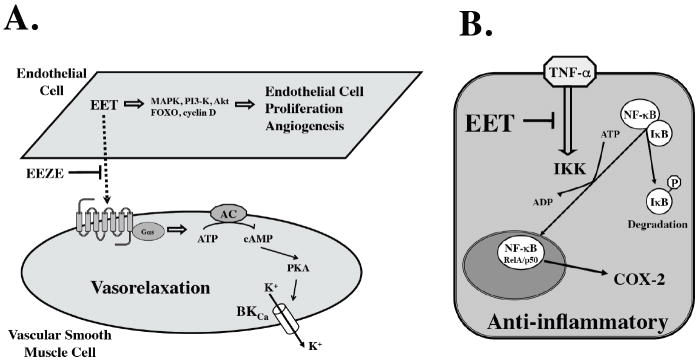Figure 2.
Epoxyeicosatrienoic acid (EET) activate vascular (panel A) and anti-inflammatory (panel B) cell signaling mechanisms. Panel A: Endothelial cell proliferation and angiogensis involves activation of p38 mitogen-activated protein (MAPK), phosphatidylinositol 3-kinase (PI3-K), kinase Akt, forkhead factors (FOXO) and cyclin D. Vasorelaxation involves activation G protein (Gαs), adenylyl cyclase (AC) generation of cAMP, protein kinase A (PKA) and opening of large-conductance calcium-activated potassium channels (BKCa). Panel B: EET anti-inflammatory action involves inhibition of tumor necrosis factor-α(TNF-α) activation of the IK kinase (IKK). IKK induces phosphorylation of the NFκB inhibitor IκB that results in ubiquitination and degradation IκB. NFκB dimmers (RelA/p50) translocate to the nucleus and activate pro-inflammatory genes such as cyclooxygenase-2 (COX-2).

